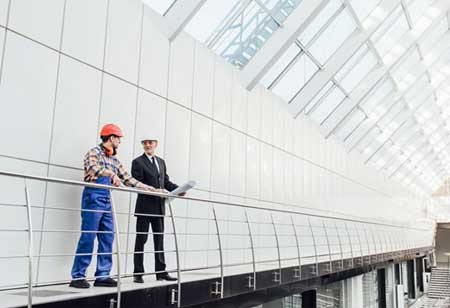Thank you for Subscribing to Construction Business Review Weekly Brief
Specials
- Apartment and Condominium Contractors Canada
- Decking Canada
- Architectural Glass Europe
- MEP APAC
- Construction Saudi Arabia
- German Apartment and Condominium Contractors
- Construction Law APAC
- Outdoor Construction
- Foundation Construction Canada
- MEP Canada
- Kitchen and Bath
- Cold Storage Construction APAC
- Precast Concrete Europe
- Construction Staffing Europe
- Pre-Construction Services
- Flooring System APAC
- Scaffolding Canada
- Swimming Pool Construction Canada
- Construction Management Canada
- Cold Storage Construction Canada
- Flooring Systems Europe
- Residential Construction
- Concrete Canada
- Construction Cladding Europe
- Construction Cladding APAC
- Concretes, Aggregates and Construction Materials APAC
- Concretes, Aggregates and Construction Materials Europe
- Commercial Contractors Europe
- Commercial Contractors APAC
- Dummy
- Construction Insulation, Coating and Waterproofing
- Construction Management APAC
- Landscaping Canada
- Construction Coating Europe
- Construction Tech Startups Europe
- Insulation Services Europe
- Mechanical Contractor Canada
- Mould Remediation and Testing Europe
- Swimming Pool Construction APAC
- Building Sealing Solutions Europe
- Construction Engineering Services
- Mechanical Electrical and Plumbing
- Roofing Systems Europe
- Architectural Glass APAC
- Startups APAC
- Construction Forensic and Owners Representative
- Flooring System
- Waterproofing APAC
- Wall Systems
- Safety and Compliance Europe
- Construction Bidding and Auctions
- Modular and Prefab Construction
- Architectural Glass
- Construction MENA
- Construction Demolition and Recycling Europe
- Modular Construction Europe
- Construction Interiors
- Steel Building APAC
- HVAC
- Doors and windows
- Construction Latam
- Building Information Modeling APAC
- Sustainable Construction APAC
- Building Restoration and Maintenance
- Commercial Contractors
- Specialty Construction
- Construction Engineering Canada
- Construction Engineering MENA
- Modular Construction Canada
- Modular Construction APAC
- Roofing and Siding Systems
- Workforce Management and Staffing
- Roofing Systems APAC
- Construction Consulting
- Steel Building Europe
- Construction Demolition and Recycling APAC
- Safety and Compliance APAC
- Concretes, Aggregates and Construction Materials
- Construction Cladding
Aluminum Railings as Catalysts of Architectural Expression
Aluminum railing manufacturers are innovating in design, enhancing safety, and promoting sustainability, driven by aluminum's durability, aesthetic flexibility, and advanced manufacturing techniques in modern construction.

By
Construction Business Review | Tuesday, November 04, 2025
Stay ahead of the industry with exclusive feature stories on the top companies, expert insights and the latest news delivered straight to your inbox. Subscribe today.
Fremont, CA: Aluminum railing manufacturers are not just producing safety barriers; they are acting as design innovators, driving architectural trends, upholding rigorous safety standards, and championing sustainable building practices. The inherent advantages of aluminum, coupled with advanced manufacturing techniques, have positioned these railings as a cornerstone of modern, durable, and aesthetically refined construction.
The Core Advantage: Material Superiority and Longevity
The growing adoption of aluminum railings in modern construction stems from the material’s inherent superiority over traditional alternatives such as wood, steel, and wrought iron. Its unmatched durability and minimal maintenance requirements make it particularly well-suited for outdoor and coastal applications. Naturally resistant to corrosion, aluminum does not rust like steel nor rot, splinter, or warp like wood. When enhanced with high-performance powder coatings such as AAMA 2604 or 2605 finishes, it delivers exceptional longevity and consistent visual appeal with minimal upkeep—translating to significant long-term cost savings.
Equally important is aluminum’s optimal strength-to-weight ratio, which offers the ideal balance between sturdiness and ease of handling. Its lightweight nature simplifies transportation and installation while reducing the structural load on buildings. This not only improves efficiency during construction but also minimizes the energy consumption and carbon footprint associated with transporting heavier materials.
Influencing Architectural Trends: Aesthetics, Customization, and Innovation
Beyond performance, aluminum railings are redefining architectural design through their clean aesthetics, design flexibility, and advanced manufacturing capabilities. Their modern visual appeal—characterized by slim profiles, concealed fasteners, and sleek lines—complements contemporary architecture, enabling unobstructed views and seamless integration with glass or cable infill systems.
In terms of customization, aluminum’s versatility in extrusion and fabrication allows for the creation of unique profiles, colors, and finishes that align with diverse design visions. Architects and builders can specify bespoke top rails, posts, and balusters, along with an extensive palette of powder-coated finishes, including popular matte blacks, charcoals, and textured surfaces that mimic natural materials like wood or stone. Leading manufacturers are further enhancing design functionality by integrating LED lighting solutions into railing systems, transforming them into architectural features that blend safety, ambiance, and aesthetic refinement.
Supported by advanced fabrication technologies and stringent safety compliance, aluminum railings are engineered to meet or exceed codes such as the International Building Code (IBC). Rigorous testing ensures compliance with load-bearing and infill spacing standards, maintaining occupant safety without compromising design intent. Aluminum’s recyclability and low embodied energy underscore its contribution to sustainable construction, helping projects earn green building certifications such as LEED. Its longevity reduces material waste and lifecycle environmental impact, making it a cornerstone of responsible and future-ready building design.
Aluminum railing manufacturers are successfully bridging the gap between design aspiration and practical necessity. By leveraging aluminum's inherent sustainability and durability and coupling it with innovative manufacturing and customization, they are not only providing code-compliant safety solutions but also enhancing the overall experience. Still, they are fundamentally shaping the modern built environment to be more elegant, resilient, and environmentally responsible.





